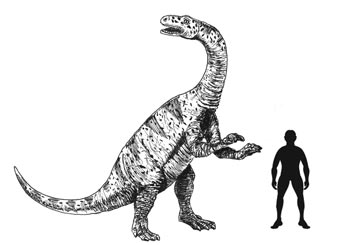The Dinosaur that May Have Kick Started China’s Fascination with Dinosaurs
The Chinese Academy of Sciences has done much to help research and explore the amazingly rich fossil strata of much of China over recent years. Today, bodies such as the world famous Institute of Vertebrate Palaeontology and Palaeoanthropology (Beijing), are at the cutting edge of dinosaur research. Indeed, this institute now houses the largest collection of vertebrate fossils in the world.
Fossils Used in Traditional Medicine
However, in a society where many fossils ended up being ground down for use in traditional medicine and where many superstitions about disturbing fossils still persist we thought it appropriate to pay tribute to just one dinosaur, the discovery of which helped transform attitudes and helped to lay the foundation for much of the academic work focusing on vertebrate palaeontology that goes on in China today.
The Yunnan Province in south-western China has provided scientists with a number of excellent dinosaur specimens, some of the most important are the fossils of the prosauropod Lufengosaurus. Prosauropods are a group of herbivorous, lizard-hipped dinosaurs that evolved in the Triassic and become the dominant large plant-eaters in many ecosystems across Pangea. They are related to the sauropods, Jurassic giants such as Apatosaurus, Brachiosaurus and Diplodocus.
An Illustration of the Prosauropod Lufengosaurus
Picture credit: Everything Dinosaur
Lufengosaurus
Chung Chien Young (Yang Zhongjian in Chinese literature), formerly named and described Lufengosaurus in 1941, a time when China was engaged in a brutal war against the Japanese. A second larger species from Yunnan Province was described in 1947, when China was still gripped in turmoil with revolution and civil war. This long-necked, six-metre-long dinosaur and other vertebrate fossils from Yunnan have provided Chinese scientists with a unique insight into the diversity and the radiation of the Dinosauria following the Triassic/Jurassic extinction event.
Fossils of vertebrates from Lower Jurassic strata are exceptionally rare and the Chinese discoveries really helped put this part of the world on the “map of global palaeontology”. The Lufeng Formation become globally significant as scientists attempted to understand the consequences of the Triassic extinction event on terrestrial life.
Lufengosaurus Fossils
Lufengosaurus fossils and specimens of other herbivorous dinosaurs plus the remains of several different types of large, meat-eating dinosaurs have enabled palaeontologists to build up a detailed picture of life in this part of the world around 200 to 195 million years ago – a time of transition in vertebrate faunas with the emergence of the dominant Dinosauria.
The work of a number of Chinese scientists and academics during the 1940s and 1950s helped to build the reputation of China in the study of palaeontology and provided the impetus for much of the research that was to follow in the last decades of the 20th Century. Lufengosaurus may not be the most famous of all the dinosaurs, but it has played an important role in the development of palaeontology and other Earth sciences in China.
CollectA created a replica of Lufengosaurus for their “Prehistoric Life” replica series, to view this range: CollectA Prehistoric World/Prehistoric Life Dinosaur Models.







Leave A Comment